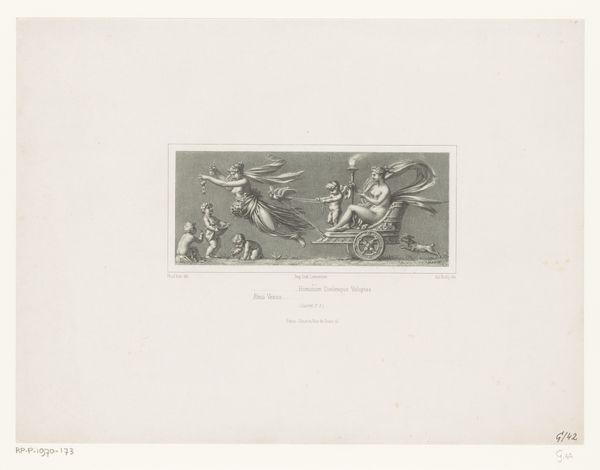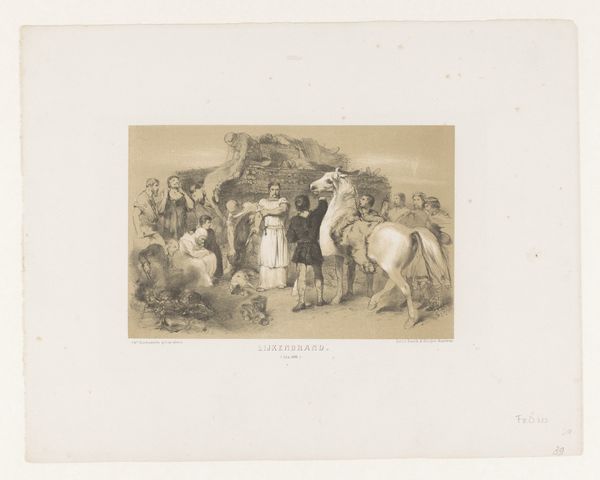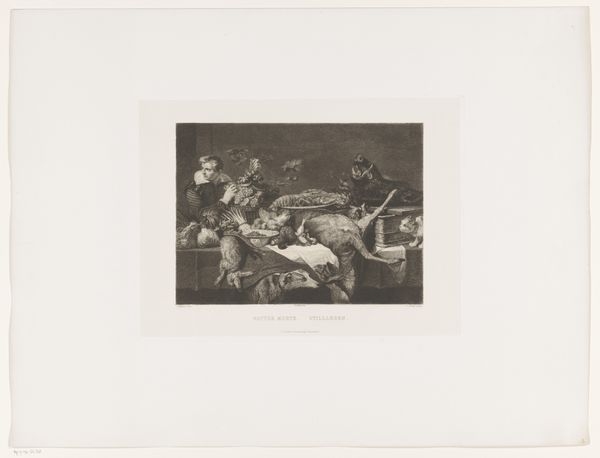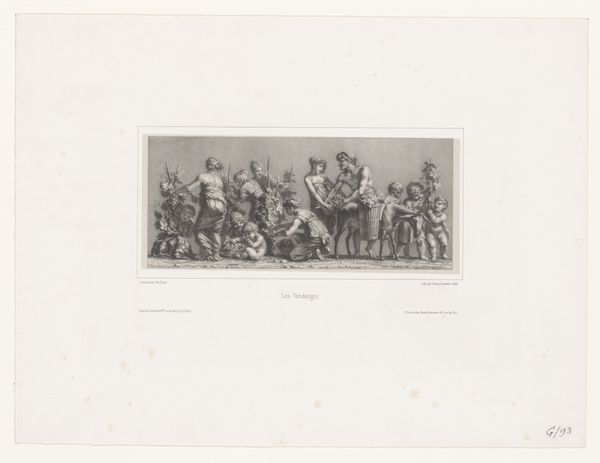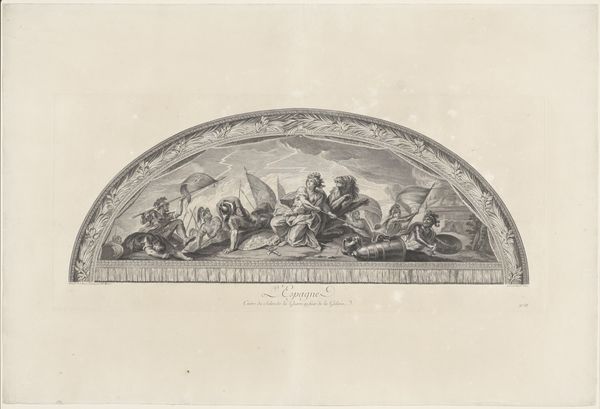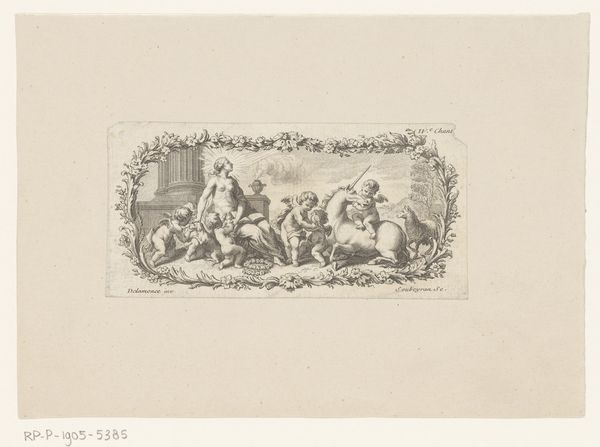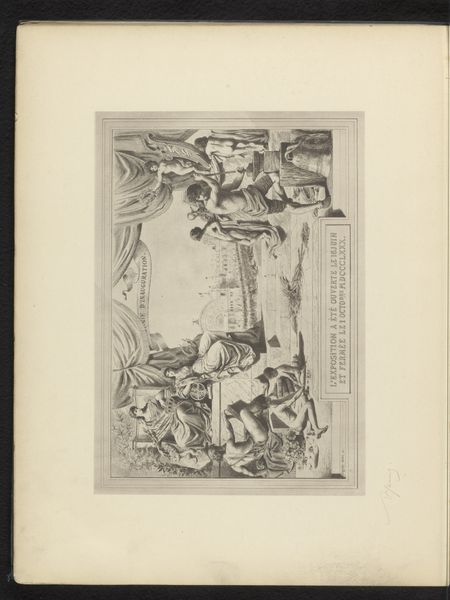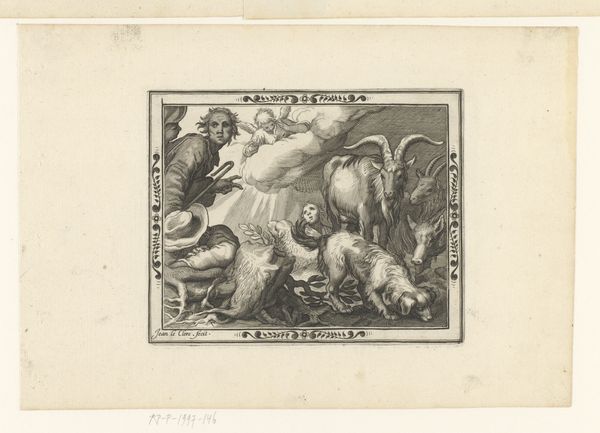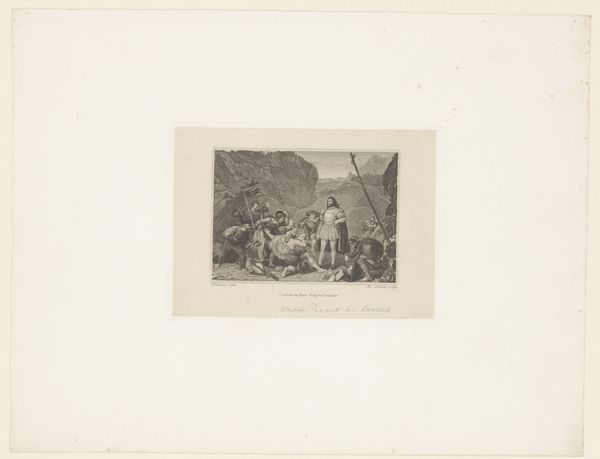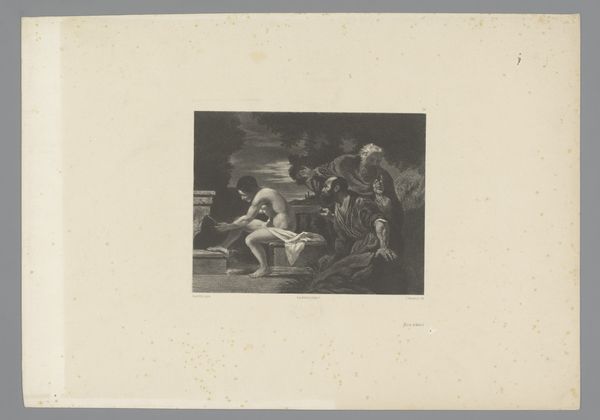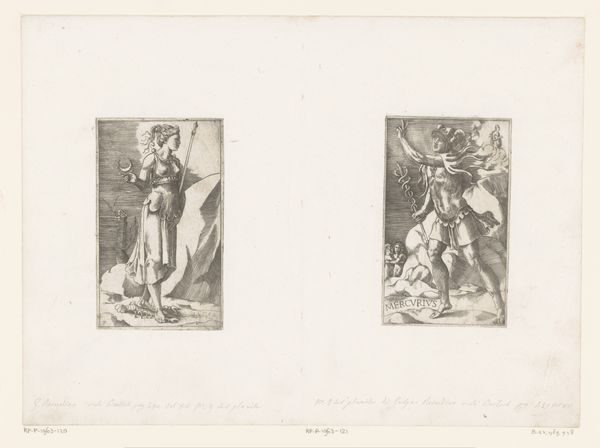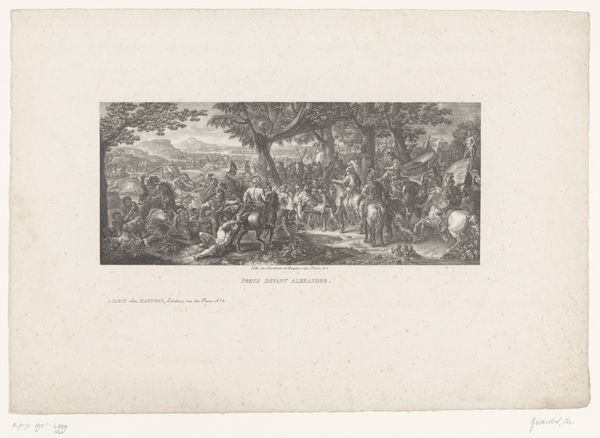
print, etching, engraving
#
neoclacissism
#
allegory
# print
#
etching
#
light coloured
#
old engraving style
#
classical-realism
#
white palette
#
history-painting
#
nude
#
engraving
Dimensions: height 240 mm, width 321 mm
Copyright: Rijks Museum: Open Domain
Curator: Here in gallery six, we're looking at "Triumph of Venus", a work realized around 1852 by Hyacinthe Aubry-Lecomte. It's an engraving and etching, a print, showcasing the goddess in her full glory. Editor: Immediately, the pale tonality gives it a dreamlike, almost ghostly quality, doesn't it? Like a vision emerging from a classical ruin. It reminds me a bit of faded frescoes or even antique cameos. What do you feel as you gaze upon it? Curator: It speaks to a desire to evoke antiquity, certainly. You have Venus enthroned in her chariot, cupids playing, and another figure, perhaps Pomona, scattering fruit, it all feels staged, allegorical. The symbolism is overt, pleasure, love, abundance, fertility, they all tumble around her. Editor: Yes! I agree it feels intentionally didactic— a pronouncement, rather than an exploration. What strikes me is how it encapsulates a particular 19th-century longing for an idealized past. Notice how the classical forms feel somewhat... restrained. Like a memory filtered through layers of polite society. Curator: Restrained perhaps in comparison to its Baroque predecessors, yes, but remember this work situates itself within the Neoclassical revival. The precision and clarity, typical of etching and engraving, aimed to capture an ‘authentic’ representation of antiquity based on archaeological discoveries and scholarly studies. Editor: Right, but isn't there also an undeniable sensuality? The nakedness, the flowing fabrics, the suggestive gestures—it is controlled, like a whisper rather than a shout, but there, under the surface. Are we invited to admire the Goddess of Love’s power, or to experience a more sensual delight? Or both? Curator: I think, ideally, Aubry-Lecomte hoped to blend those experiences, celebrating sensual joy under a veneer of neoclassical virtue, which certainly speaks to its period. To look closer for a second: see the crisp lines? He demonstrates a remarkable mastery of the engraving and etching techniques to capture light and texture. Editor: Absolutely. A fascinating piece—the contrast between its proclaimed purity of form and inherent sensual energy provides such a compelling conversation about longing and idealization, doesn’t it?
Comments
No comments
Be the first to comment and join the conversation on the ultimate creative platform.
